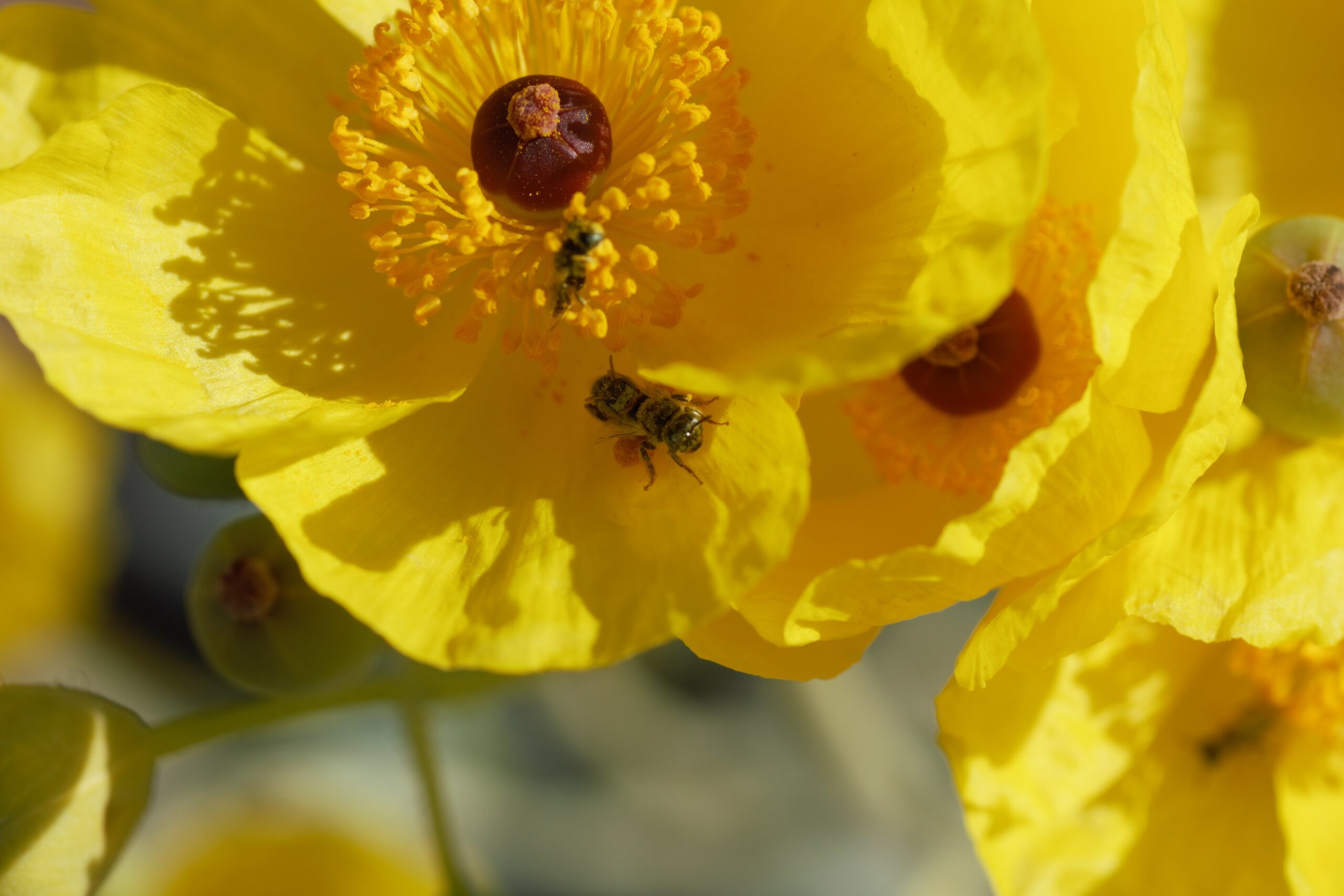Clark County's Mojave poppy bee could be the second bee in continental U.S. on the Endangered Species List

In the 48,000 square miles of the Mojave, there is only one bee that pollinates two of the rare poppies that are native to the desert — the Mojave poppy bee.
The Fish and Wildlife Service announced Friday that it found “substantial scientific or commercial information” that the bee might warrant an endangered species listing because of threats from grazing, recreation, gypsum mining and competition from non-native honeybees. The so-called “90-day finding” kicks off a process of gathering more information to determine whether the Mojave poppy bee will be protected under the Endangered Species Act.
“This poppy bee is a vital part of the Mojave landscape that erupts into a gorgeous floral display in spring, attracting droves of nature lovers to the desert,” said Tara Cornelisse, an entomologist and senior scientist at the Center for Biological Diversity. “Unless this bee is protected, the Mojave Desert is at risk of losing three species that define its essence.”
The tiny, quarter-inch long bee, which is yellow and black, is a specialist bee solely in charge of pollinating the Las Vegas Bearpoppy and the Dwarf Bear-Poppy. These poppies produce pollen but no nectar.
Female Mojave poppy bees collect pollen to feed their young and the males defend the poppies for a chance to mate with the females. They both pollinate the bear poppy in the process.
A petition was filed in 2018 by the Center for Biological Diversity, a nonprofit whose central focus is protecting endangered species, to consider the Mojave poppy bee for Endangered Species Act protection. If designated an endangered species, it would be the first solitary bee in the continental United States to be protected under the act (solitary bees pollinate plants, but unlike honeybees, do not live in colonies, produce honey or have a queen).
Under the Endangered Species Act, the listed species would have federal protections to ensure its survival, which can result in designating a critical habitat. Within that critical habitat, developers and mining companies could lose access to the affected areas unless they could ensure the species would co-exist naturally with their presence.
The poppies that the bees pollinate are found in gypsum-rich soil. Gypsum is used in building materials such as drywall and concrete and any land where gypsum can be mined can be very lucrative for mining companies.
The bee was first described by scientists in 1993 and once inhabited 34 sites across Nevada, California, Utah and Arizona. Now there are just seven sites in the Lake Mead National Recreation Area and Bureau of Land Management land in Clark County where the bee exists.
About 90 percent of wild plants and 75 percent of leading global food crops, which includes 35 percent of the global food supply, depend on animal pollinators for reproduction, and the great majority of that work is done by bees. Despite the growing evidence of the decline in bee populations, the rusty patched bumblebee is the only bee in the continental United States currently protected under the Endangered Species Act.
